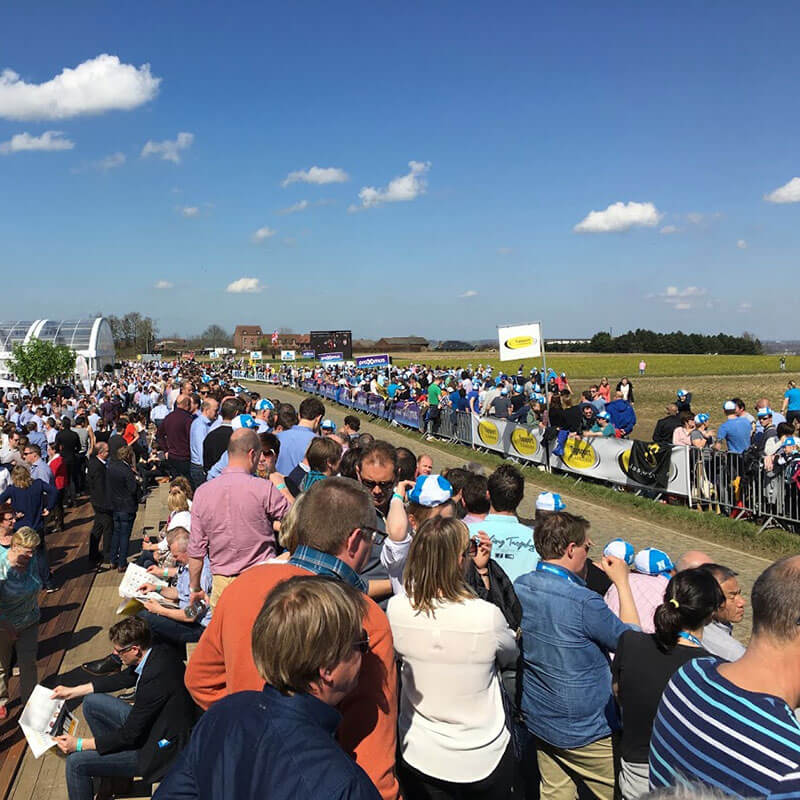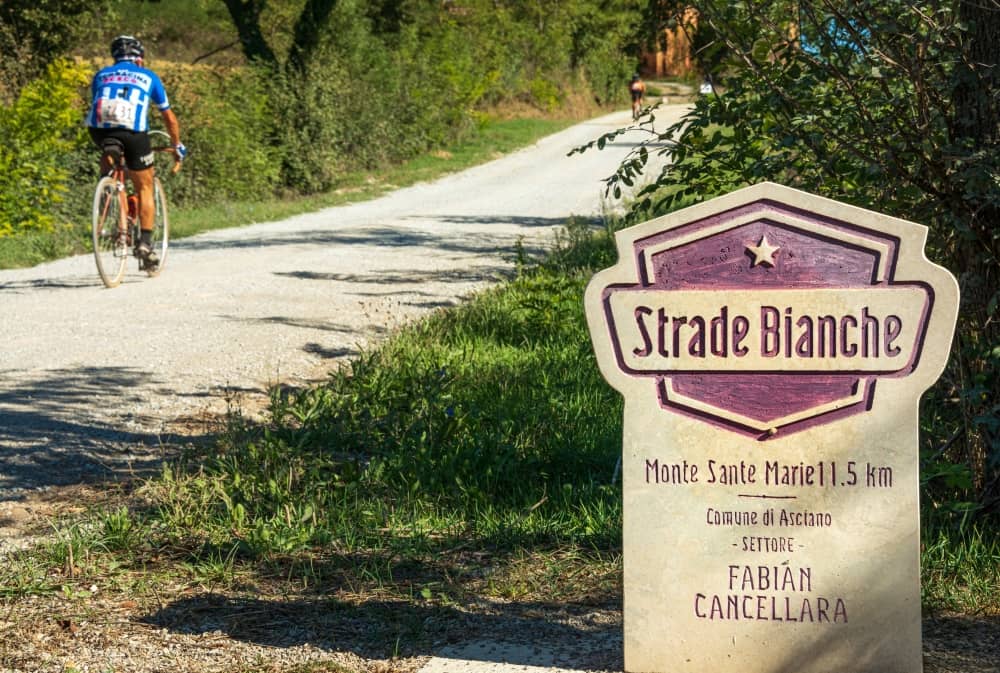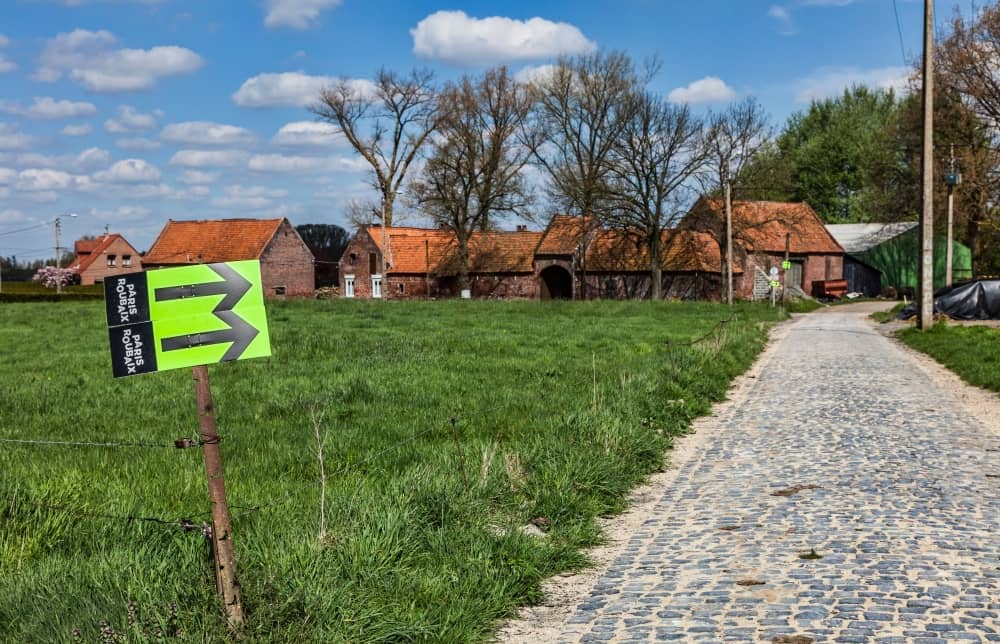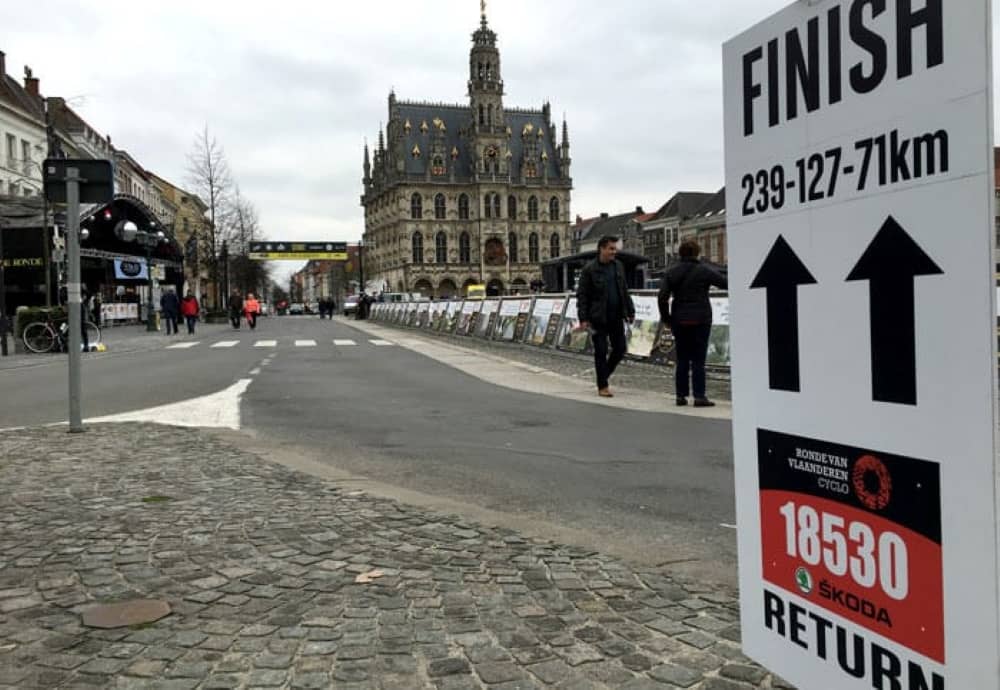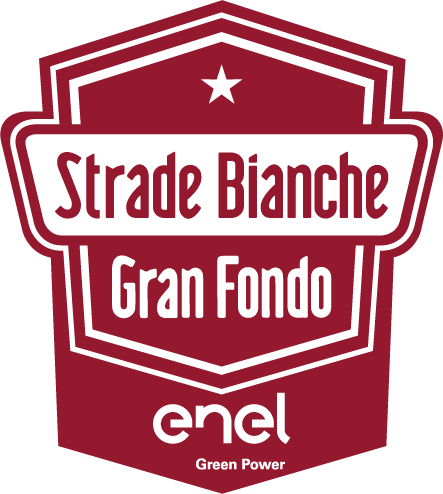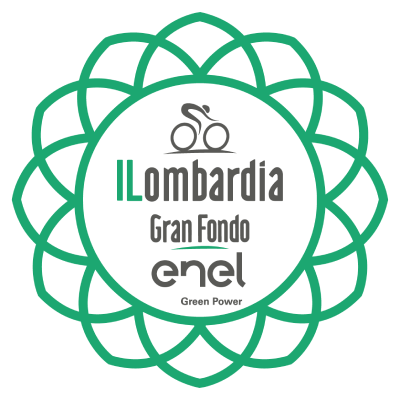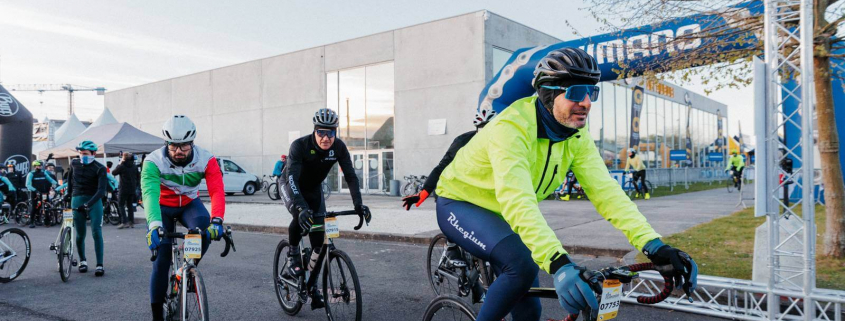
The Spring Classics are a combination of high-profile one-day Men’s and Women’s cycling races held in Europe. Dating back to the 19th century, the events are among the most iconic and celebrated races in the world.
When Do the Spring Classics Begin?
The events kick off in high spirits in late February each year, starting with the Belgian double header of Omloop Het Nieuwsblad, followed by the Kuurne-Brussel-Kuurne. Dubbed the “Opening Weekend, these early events often feature riders who have ridden into form during the Antipodean summer or European winter – cyclocross season. Good results at the opening weekend are often an indicator to showcase riders’ talents for the months to come.
Five Monuments History
The five Monuments concept slowly began taking shape in the 20th century when the following five races started gaining traction, making them the most prestigious one-day cycling events:
- Milan-San Remo (organised in 1907)
- Paris-Roubaix (1896)
- Liège-Bastogne-Liège (1892)
- Tour of Flanders (1913)
- Il Lombardia or Giro di Lombardia (originally called Milan-Milan and established in 1905)
Only three riders were able to win all five Monuments throughout their career, and all are Belgians: Henri “Rik” Van Looy, Eddy Merckx, and Roger De Vlaeminck. However, Merckx won them all more than once in his cycling career.
Spring Classics
As a cycling race enthusiast, you most likely agree that the Spring Classics are the backbone of the opening months of the pro-cycling season. Yes, the Grand Tours are indeed the embodiment of long-form cycling, as the races take place over three weeks or longer. However, the Spring Classics one-day races represent quick yet exciting high-impact cycling.
Sure, there are other major one-day races throughout the year, but the spring is perfect for those looking for condensed action. The no-tomorrow race motivates cyclists to showcase an all-out performance as the Spring Classics race unfolds across the Netherlands, France, Italy, and of course, Belgium.
But what is the “Spring Classics” exactly? The term “Spring Classics” is slightly open to interpretation; in fact, both “spring” and “classic” are. It all depends on when “spring” begins and which races are deemed “classic.” Thus, some people apply different criteria in naming the exact races in the series. However, the most important ones are:
- Omloop Het Nieuwsblad (formerly Omloop Het Volk)
- Kuurne-Brussels-Kuurne
- Strade Bianche
- Milan-San Remo
- E3 Saxo Classic and Gent-Wevelgem
- Tour of Flanders
- Paris-Roubaix
- The Ardennes, namely Amstel Gold Race (Netherlands), La Flèche Wallonne (Belgium), and Liège-Bastogne-Liège (Belgium)
The Classics season starts with the “Opening Weekend” in Belgium. Omloop Het Nieuwsblad, which comprises men’s and women’s races, kicks it off, followed by Kuurne-Brussels-Kuurne, both held on the weekends. Strade Blanche in Italy is next, with the men’s Milan-San Remo and the women’s Trofeo Alfredo Binda continuing on Italian gravel before proceeding to Belgium and the cobbles.
The Ardennes have men’s and women’s races. Amstel kicks off after Paris-Roubaix and is associated with the Cauberg climb. La Fleche Wallonne (The Walloon Arrow), on the other hand, is important, as well, especially with its brutal finish up the Mur de Huy climb, where some sections reach a gradient of 26%.
Paris-Roubaix, Milan-San Remo, and the other Monuments sit a tier above the other races, including Omloop Het Nieuwsblad and Gent-Wevelgem, which are regarded as semi-classics. Strade Bianche, although relatively new and lacking in heritage, is still considered semi-classic.
Italian Spring Classics
Milan–San Remo
The Milan–San Remo (“Sanremo” in Italian) is an annual race between the stunning cities of Milan and Sanremo. The entire route encompasses around 300 kilometres of breathtaking landscapes before the intense finish.
Before becoming known as the longest one-day professional race, La Primavera or “The Spring” in Italian, hailed from an amateur race in April 1906 called Unione Sportiva Sanremese. Just a year later, the first version of the Milan–San Remo race began and has continued to become the first major race in the cycling calendar.
Milan–San Remo is viewed as a sprinter’s or puncher’s race, mostly comprising long, flat sections with two short climbs away from the Italian coast. The Cipressa and Poggio are featured heavily before the race finish in San Remo.
Strade Bianche
Initially, the race was known as the Monte Paschi Eroica. It was created in 1997 as a recreational race meant for vintage classic bikes only. The race is still held to this day after the official professional race.
The purpose of the race was to recreate the initial racing experience where races were done on dirt or unpaved roads. The race started in Gaiole in Chianti and ended in Siena. Monte dei Paschi was the race sponsor for the first four years. The race was held in October and was later moved to March. In 2009 the event was renamed Strade Bianche.
Cobbled Classics
E3 Harelbeke
The E3 Harelbeke was first held in 1958. Initially, the race was held from Harelbeke to Antwerp and back. The race happens annually in Flanders, Belgium. After some time, the course was changed, and now the race begins and ends at Harelbeke, covering a distance of 203 kilometres. The event is on the UCL World Tour calendar and is held on the last Friday of March, marking the start of the Flemish Cycling Week.
Currently, Tom Boonen holds the highest record of victories in the race, having won 5 times. He is closely trailed by Rik Van Looy, who’s won 4 times.
Gent–Wevelgem
The Gent–Wevelgem race was first held on 9th September 1934 in Belgium as an amateur race covering 120 km. It’s among the Classic races held during the Flemish Cycling Week. Initially, the race was only attended by Belgian participants. Later, other participants began to engage in the race as its popularity increased. In 1936 the distance of the race was increased to 168 km. After the expansion, Robert Van Eenaeme became the first rider to win the race.
Tour of Flanders – [Dutch: Ronde van Vlaanderen or De Ronde (“The Tour”)]
One of cycling’s most revered races – perhaps due to its age, cultural and historical significance – is the Tour of Flanders. The first edition of this race started in 1913, celebrating its 100th in 2016.
The Tour of Flanders features a winding route with multiple cobbled road secretions. The race boasts the highest number of records achieved by riders, with six cyclists. Four of these cyclists are Belgian, namely Achiel Buysse, Eric Leman, Johan Museeuw, and Tom Boonen, along with Fiorenzo Magni (from Italy) and Fabian Cancellara (from Switzerland). All six have three victories to their name.
Paris–Roubaix
One of the oldest cycling races in the world is Paris–Roubaix, designed by Théodore Vienne and Maurice Perez in 1896. Aptly nicknamed the “Hell of the North” (L’Enfer du Nord in French), it is a one-day bike race notorious for a brutally challenging course, thanks to northern France’s rough and rugged cobbled terrain.
The weather is no help, either, as the cobblestones or pavé can typically be wet and muddy in Spring. The pavé and mud combine to make it slippery as ice, increasing the danger for cyclists and excitement for cycling fans. Due to the extreme difficulty, Paris–Roubaix is shrouded with infamy, prompting cyclists to dismiss the race altogether. However, those up to the challenge of the most dangerous of the five Monument races use specialised bike frames, wheels, tyres and components.
Ardennes Classics
Amstel Gold Race
The Amstel Gold Race is a one-day classic road race commonly held in mid-April. It was created by two Dutchmen, namely Ton Vissers and Herman Krot, on 30th April 1966. Initially, the plan was for the race to start in Amsterdam and end in Maastricht, a distance of 280 km. However, there were some issues with the course, such as the diversions that should be made because of the rivers on the route. As a result, the total distance exceeded the initial 280 km.
The course was redrawn to start from Breda and end at Meerssen. It was the longest course at that time, covering 302 km. It is often changed slightly each year, but since 2013, it has started at Maastricht and ended above Valkenburg.
After the final climb of the Cauberg, our colleague and great friend Phil Anderson won the 1983 Amstel Gold Race and is still the only non-European to have done so.
La Flèche Wallonne
The La Flèche Wallonne was first held in 1936. Like many races of its time, It started as a campaign to boost newspaper sales, Les Sports. Although it’s not part of the five classic Monuments, it is regarded as one of the most significant Spring Classics. Just like many other races, its course has been altered several times.
Since 1990, the event has started at various locations and ended at Huy, Belgium, covering a distance of around 200 km.
Liège–Bastogne–Liège [La Doyenne “The Old Lady” in French]
The Liège–Bastogne–Liège is the oldest Classics race dating back to 1892, and is considered the most physically demanding course. The first course was originally from Spa to Bastogne, a distance of over 250 km. The most successful cyclist on the course is Eddy Merckx, having won five times.
The race now starts as the name suggests from Liege, heads south to Bastogne then returns to Liege. The race marks the end of the Spring Classic season.
Key Historical Highlights
1981
The 1981 Paris-Roubaix race consisted of Bernard Hinault battling with five other cyclists in a sprint on the velodrome. With about 13 km to go, he hit a dog that seemingly came out of nowhere just when he arrived at the final cobbled section. The crash dramatically set him back, but he quickly got on his bike and still prevailed, defeating the reigning champion and a four-times race winner.
1910
In 1910, before Eugène Christophe became the first to wear the Tour’s iconic Yellow Jersey, he braved the Milan-San Remo blizzards along with 71 other riders. This specific race became famous for being “the toughest bike race ever” due to the extreme weather conditions.
Riders were forced to take refuge in homes along the roads while waiting for the snowstorm in Passo del Turchino to pass. Only four of the 71 cyclists chose to reach the end, with Christophe finishing the race in 12 hours and 24 minutes. It is considered the slowest edition of Milan-San Remo ever.
1907
The Giro di Lombardia was anything other than professional. Giovanni Gerbi crossed the finish line in just under 8 hours. As his competitors arrived, so did the accusations. From allegations of Gerbi supporters blocking a level crossing to them throwing nails on the road, his competitors had a lot to report to the officials. The officials were able to sort out the issues, and Gerbi was relegated to the last spot and also received a six-month ban from racing.
We hope you enjoy a brief tour of the Spring Classics’ history. Are you interested in more about cycling races? Sign up for our newsletter, and be sure to take a look at our Spring Classics tours. We look forward to you joining us on the next one!

